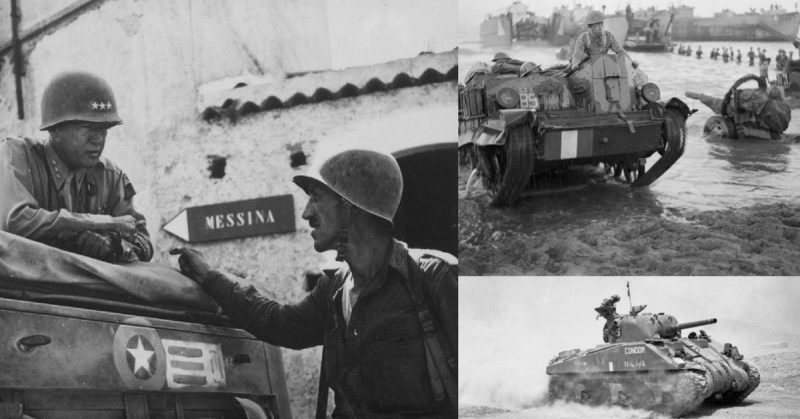

Images of the pre-invasion build-up and beach landings Other Operation Husky ResourcesĪction Report, Western Naval Task Force: The Sicilian Campaign-Operation "Husky," July–August, 1943 Navy, the circumstances of the Husky landings added to the joint/combined operations lessons learned gained in Operation Torch the previous November. For the Allies, Husky provided a secure staging area for future operations in southern Europe. The Germans were now forced to counter Allied operations in mainland Italy, invariably weakening their frontline forces elsewhere, particularly in the Soviet Union. Operation Husky was a primary factor contributing to Italy’s surrender on September 1943, the deposal of Benito Mussolini, and the country’s subsequent shift to the side of the Allies. This was accomplished over a three-day period-with minimal losses due to exceptionally strong antiaircraft defenses-by 17 August.
#WORLD WAR 2 OPERATION HUSKY SERIES#
In early August, following a series of delaying actions, the Germans decided to evacuate their remaining forces across the Strait of Messina to southern Italy. Sicily’s capital, Palermo, was occupied by U.S. However, the enemy formations were steadily squeezed into northeastern Sicily by the sheer mass of the Allied onslaught. Hotly contested sectors included the areas around Mount Etna and the eastern Sicilian port of Catania. Thus, Montgomery’s task force was soon able to advance toward objectives north of the landing areas, and Patton’s forces pushed quickly toward the west.īy mid-month, Allied advances were slowed by German reinforcements rapidly deployed from mainland Italy. Despite some brief tactical successes, counterattacks by the few German units then present on Sicily were hampered by difficulties coordinating with their Italian allies. Although severe weather conditions caused delays and misdirection, the Italian defense strategy called for massing forces in areas beyond the beaches and thus allowed the Allies to disembark and assemble without significant opposition. The initial Allied amphibious landings were made on 10 July on the south and southeast coasts of Sicily. However, the airborne units managed to sow confusion among the predominantly Italian army formations they encountered. and British airborne landings on the night of 9/10 July, with the mission to secure key bridges and traffic points, were only marginally successful due to strong winds and faulty navigation. Air support was provided by the combined U.S.-British Mediterranean Air Command. Patton Jr.’s Western Task Force drew on in-theater U.S. General Bernard Montgomery’s Eastern Task Force was made up of British Commonwealth formations (British Eighth Army and a Canadian infantry division). Landing forces for Husky followed a similar organization. The combined naval forces were under overall British operational command. The invasion fleet was divided into two task forces: The Eastern Naval Task Force was drawn from the Royal Navy’s Mediterranean Fleet the Western Naval Task Force was formed around the U.S. However, operational command of the naval and landing forces was carried out by senior British officers. Eisenhower maintained overall command of Husky. The multiple landings would also lead to the rapid capture of nearly all of the Sicily’s main port cities, denying them to the Axis, and securing them for immediate logistical support and for the staging of future operations.Īs commander in chief of all Allied Forces in North Africa, General Dwight D. The plan for the invasion-Operation Husky-called for dispersed landings by brigade- and division-sized formations in the southeast, south, and northwest areas of Sicily in order to facilitate the rapid capture of key enemy airfields posing a threat to the beachheads and the invasion fleet. The Americans and British were initially at odds regarding the strategic value of the operation, but the British were able to argue successfully that an amphibious assault on the island would divert and disperse Axis forces, and that a positive outcome to the campaign would significantly lessen the presence of enemy air assets in the western Mediterranean.Īllocation of landing forces began in May following the final defeat of German and Italian forces in Tunisia. The Allied decision to invade Sicily following the foreseeable defeat of Axis forces in North Africa was an outcome of the 14–24 January 1943 Casablanca Conference.


 0 kommentar(er)
0 kommentar(er)
